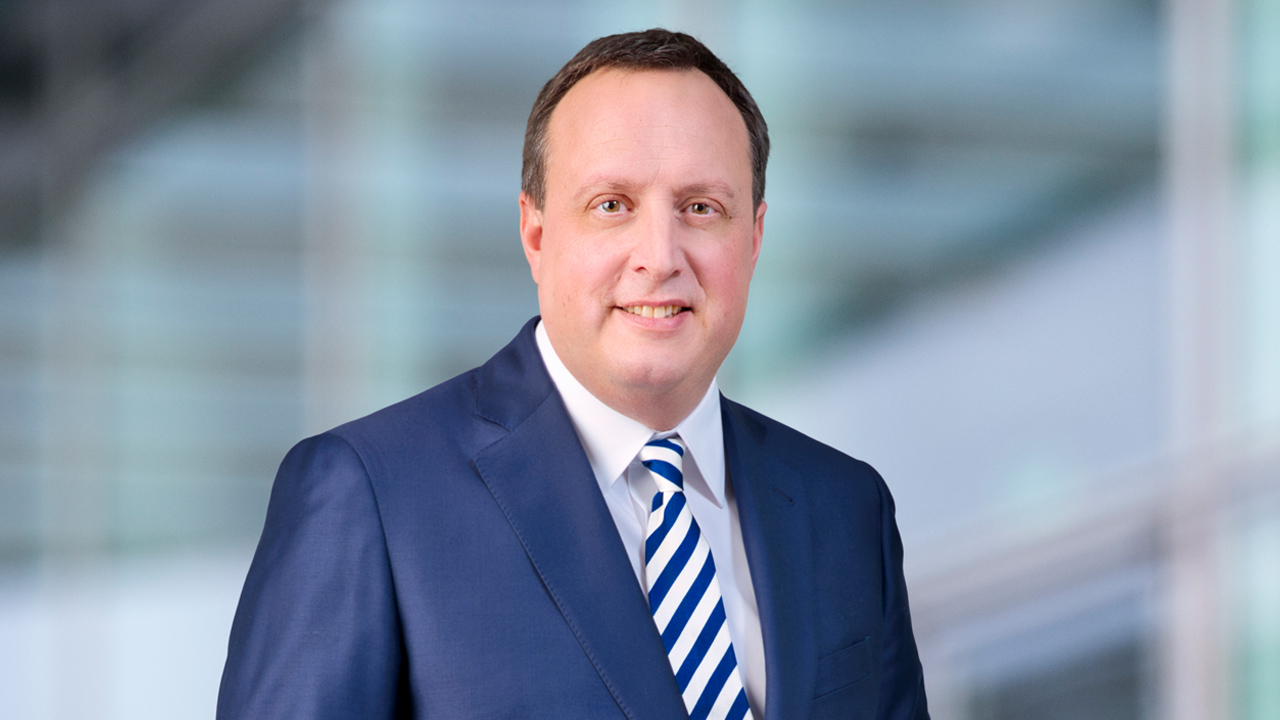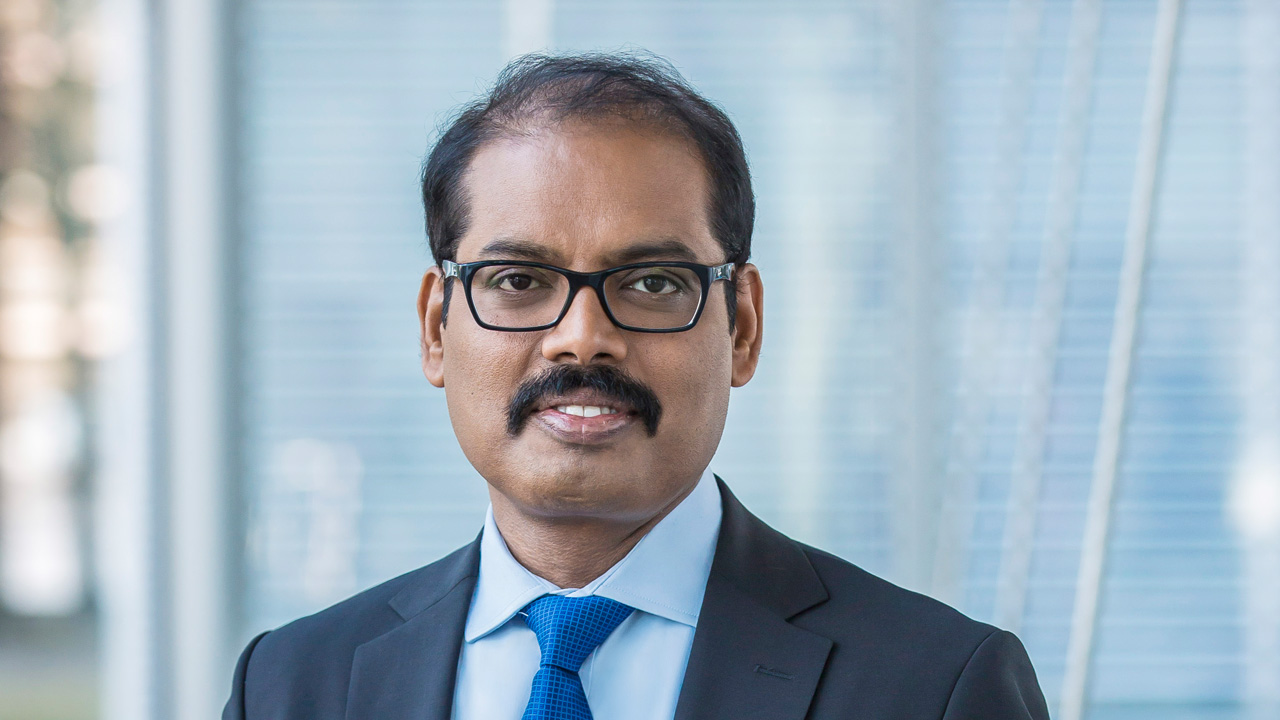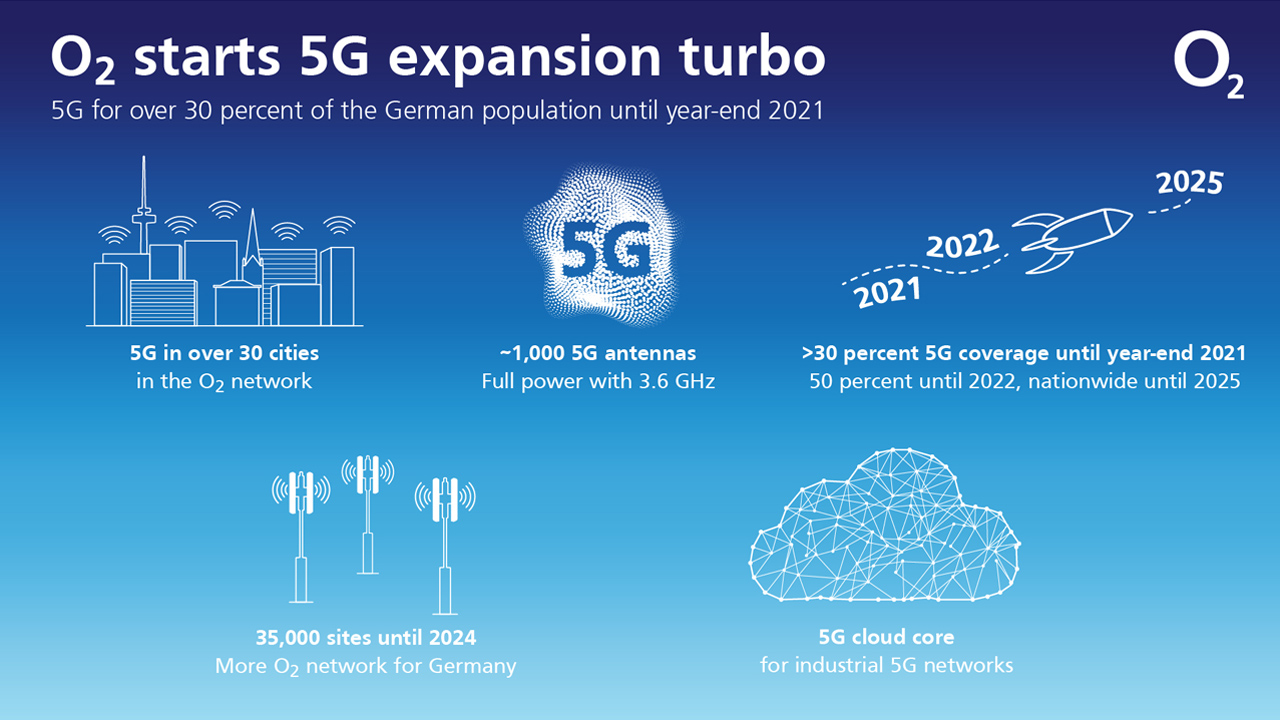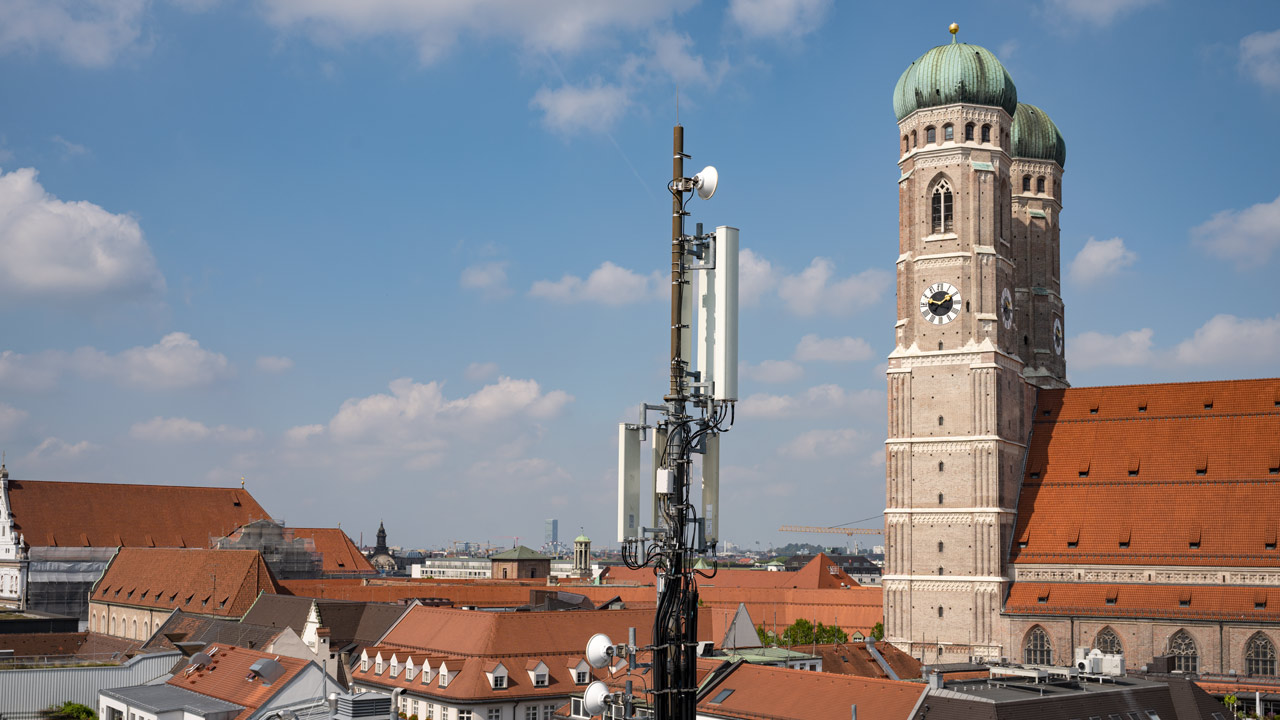29.03.2021
5G for 30 percent of the population in 2021 - 5G standalone in preparation:Telefónica Deutschland / O2 launches 5G expansion turbo

Markus Haas
Telefónica Deutschland / O2 is continuing its own network expansion offensive in 2021 - with a much stronger focus on 5G and the technological transformation of the network. Following the largest 4G network expansion program in the company's history with over 11,000 new 4G transmitters in the previous year, O2 is now igniting the 5G expansion turbo. In addition, as a pioneer, O2 is focusing on technological innovations such as 5G standalone, Open RAN and exciting 5G industry solutions via the cloud this year.
"Our O2 network is stronger than ever and on par with the competition. We have done our homework on network rollout and now provide 99 percent of the population with fast 4G. Now we are launching our 5G rollout turbo," said Markus Haas, CEO of Telefónica Deutschland / O2. "We have ambitious expansion plans to get the full power out of our O2 network. In addition, we are closing the last coverage gaps. Via our expansion offensive and cooperations with competitors, our O2 network will grow significantly - from currently over 26,000 to 35,000 mobile sites in 2024. As a result, we will offer our O2 customers an even better mobile experience."
- O2 5G network live in more than 30 cities with around 1,000 5G antennas on 3.6 GHz
- 30 percent 5G coverage by year-end 2021, nationwide 5G network by 2025
- 6,000 more 5G antennas planned on 3.6 GHz, plus several thousand 5G stations over other frequency bands
- Technology pioneer: launch of 5G standalone in 2021, 5G core network in the cloud
O2 expands its 5G network to more than 30 German cities

Mallik Rao
In recent weeks, O2 has continuously expanded its 5G network. The 5G network now operates in more than 30 German cities* with around 1,000 5G antennas. O2 is currently using exclusively the most powerful 5G variant in the frequency range around 3.6 GHz in order to offer its customers the greatest possible capacities and at the same time create the prerequisite for using real 5G applications.
"We are bringing our O2 5G network to more and more cities and also rural regions," says Mallik Rao, Chief Technology & Information Officer of Telefónica Deutschland / O2. "We are focusing on an intelligent mix of real 5G, DSS and state-of-the-art network technologies. By the end of the year, we already want to cover more than 30 percent of the German population with 5G and provide a nationwide 5G network by 2025. This means we are rolling out 5G in Germany twice as fast as 4G to drive digitization and innovation in this country."
O2 will build around 6,000 5G antennas in the frequency range around 3.6 GHz in 2021. In addition, there will be several thousand more 5G stations over 700 MHz and 1800 MHz. While the "Dynamic Spectrum Sharing" (DSS) technology commonly used in the German market is used at 1800 MHz, which transmits 4G and 5G in parallel, O2 uses pure 5G at 700 MHz. This enables the provider to bring 5G New Radio even better into the area.

Telefónica Deutschland / O2 is continuing its own network expansion offensive in 2021
On the way to "real 5G": O2 launches 5G standalone network in 2021

By the end of the year, more than 30 percent of the German population should be covered with 5G
So far, 5G is still based on the 4G standard (=5G non-standalone). O2 is now putting the 5G standard on its own feet and launching its 5G standalone network before the end of 2021. This will allow 5G to develop its full potential, with gigabit speeds, low response times of up to 1 millisecond, and innovations such as network slicing - the division of the network into several individual networks. For the 5G core network, O2 has chosen network equipment supplier Ericsson in 2020 and has already successfully conducted initial 5G standalone tests.
O2 was also the first German network operator to bring the vendor-independent Open RAN technology out of the lab and into the O2 live network. Open RAN sites have already been transmitting since December 2020 in Landsberg am Lech - Germany's first Open RAN City. From the fall of 2021, O2 will convert further locations to Open RAN.
5G for industry and SMEs - directly from the cloud

Telefónica / O2 is also building high-performance, private 5G networks for industry and SMEs
Telefónica / O2 is also building high-performance, private 5G networks for industry and SMEs. For Mercedes-Benz Cars in Sindelfingen, the provider has built a modern 5G campus network that efficiently interconnects machines and plants. For its startup innovation hub Wayra, the provider has built a private 5G standalone network in Munich.
Now Telefónica / O2 is taking an innovative next step: for the first time, the company and its partners Ericsson and AWS have succeeded in completely virtualizing a 5G core network and operating it purely in the cloud. With the cloud-based 5G core network, O2 significantly simplifies the deployment of private 5G networks for business customers, as the core network comes from the cloud and does not have to be physically built and operated on site.
4G remains important
However, 4G remains the basis for the further digitization in Germany, as millions of customers continue to use the 4G network for their digital applications in their everyday lives. That is why O2 is building several thousand new 4G sites again this year to close the last 4G coverage gaps and increase capacity in cities as well as in rural areas. To this end, O2 is also converting the existing 3G frequencies to the significantly more powerful 4G standard by the end of the year so that customers can surf the O2 network even faster.
| * | Currently, around 1,000 5G antennas are live in the O2 network in Berlin, Bielefeld, Bochum, Bonn, Dachau, Dortmund, Duisburg, Düsseldorf, Erlangen, Essen, Feucht, Frankfurt, Fürth, Hamburg, Heilbronn, Herzogenaurach, Karlsruhe, Cologne, Landsberg am Lech, Leinfelden-Echterdingen, Mannheim, Mönchengladbach, Munich, Münster, Nuremberg, Potsdam, Rosenheim, Röthenbach an der Pegnitz, Stuttgart, Waiblingen and Wuppertal. |